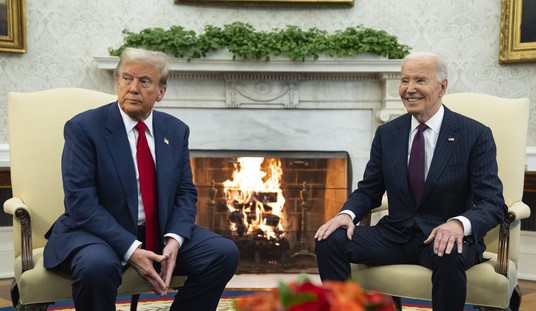Last year, in the wake of George Floyd’s death the University of Wisconsin’s Black Student Union made several demands of the university. One demand was that the school remove the statue of Abraham Lincoln:
Two student organizations, the Black Student Union and the Student Inclusion Coalition, pushed for the statue’s removal in early June, days after George Floyd died in Minneapolis police custody and protests erupted nationally over racial injustice.
The students’ efforts gained newfound attention after protesters tore down two other statues at the state Capitol earlier this week — one of Civil War abolitionist Hans Christian Heg and another of a female figure that represents the state’s “Forward” motto.
UW Chancellor Rebecca Blank eventually rejected that demand saying, “when the totality of his tenure is considered, Lincoln is widely acknowledged as one of our greatest presidents, having issued the Emancipation Proclamation, persuaded Congress to adopt the 13th Amendment ending slavery and preserved the Union during the Civil War.”
BSU president Nalah McWhorter wasn’t pleased with that response. “For them to want to protect a breathless, lifeless statue more than they care about the experiences of their Black students that have been crying out for help for the past 50, 60 years, it’s just a horrible feeling as a student, as a Black and brown student on campus,” she said.
But the BSU was much more successful with one of their other demands. They demanded that the school remove a massive 42-ton rock which had been at the campus since glaciers moved it there at least 12,000 years ago:
Carried by glaciers from perhaps as far north as Canada, the 65- to 70-ton rock was dumped, along with billions of tons of other debris, when the ice receded some 12,000 years ago.
Until it was winched out of the hill and moved to its current location next to Washburn Observatory, only about a foot and a half of the rock had shown above ground.
Officially, the boulder would come to be named “Chamberlin Rock” after Thomas Crowder Chamberlin, an eminent 19th-century geologist and university president.
But at the time of its discovery, some referred to it colloquially as “N****rhead rock,” a commonly used expression at the time to describe any large dark rock.
There’s a screenshot of the original article about digging up the boulder which shows it was really called that in the newspaper back in 1925. But the campus named it Chamberlin rock and a plaque calling it that was installed in 1926. Nevertheless, the BSU argued the rock was harmful and should be reburied, broken up or at a minimum moved somewhere else.
Meeting minutes from a facilities planning & management meeting last November show that the BSU president McWhorter said the rock was “a symbol of the injustice students of color face on
campus daily.” At the time a professor from the Department of Geoscience opposed moving the rock and noted that geology students are taken out to look at it every semester because it is a significant example of pre-Cambrian glacial rock. He said if it had to be moved then it should be taken to a new location, not broken up or reburied. At the end of the meeting the group voted to recommend its removal.
Earlier this month a crew spent two hours moving the rock which the BSU considered a victory even though an article about the removal noted that there’s no evidence the rock was ever called by the offensive term beyond that one newspaper report in 1925:
UW–Madison historians have not found evidence that the racist term attached to the rock in the 1925 newspaper article was used in any capacity by the university. However, they note that the Ku Klux Klan was a pervasive presence in the Madison area in the early part of the last century and that people of color were often mocked in minstrel shows at campus facilities and in campus satiric periodicals.
Yesterday the NY Times published a piece by John Mcwhorter (no relation to the Nalah McWhorter, the UW BSU president quoted above) who described the entire effort to move the rock as performative anti-racism.
The students are fashioning their take on the rock as a kind of sophistication or higher awareness. But what they are really demanding is that we all dumb ourselves down.
The idea, it would seem, is that there is no difference between the past and the present, that what some writer said one day during the Coolidge administration would be hurtful to a student walking past the rock while texting last month, that this rock is representative of racism in the same way that a Confederate statue is representative of Southern racism…
If the presence of that rock actually makes some people desperately uncomfortable, they need counseling. And as such, we can be quite sure that these students were acting. Few can miss that there is a performative aspect in the claim that college campuses, perhaps the most diligently antiracism spaces on the planet, are seething with bigotry. The Wisconsin rock episode was a textbook demonstration of the difference between sincere activism and playacting, out of a desire to join the civil rights struggle in a time when the problems are so much more abstract than they once were.
The true fault here lies with the school’s administration, whose deer tails popped up as they bolted into the forest, out of a fear of going against the commandments of what we today call antiracism, which apparently includes treating Black people as simpletons and thinking of it as reckoning.
…too much of what passes as enlightenment on race these days involves merely pretending that something makes sense out of fear.
Specifically, McWhorter says the administration was afraid of saying no for fear they would be called racist for doing so. I think that’s probably accurate though I think the fact that the same BSU had also called for the Lincoln statue to be removed suggests the administration decided to split the difference. The Lincoln statue would stay but the rock could go. It doesn’t make any sense but then sense isn’t really what wokeness is about. It’s about power. Forcing the administration to move a 42-to boulder to somewhere it can’t offend a tiny handful of students who have decided to be offended by it may be performative anti-racism but it’s a performance that demonstrates the group’s very real power.








Join the conversation as a VIP Member